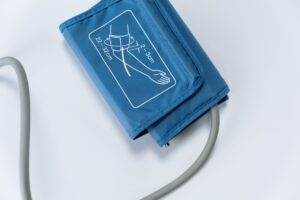Experience the Soothing Benefits: Can massage lower blood pressure? Unravel the intriguing connection between massage therapy and blood pressure reduction. Delve into the scientific research to discover the potential of this age-old practice in promoting cardiovascular health. From the relaxing strokes to the calming effects, explore how massage might just be the touch of serenity your heart needs. Join us as we journey through the realm of massage and its potential impact on blood pressure management. Can massage truly make a difference? Let’s delve into this captivating question and find out.”
When it comes to managing blood pressure, people often turn to conventional methods such as medication and lifestyle changes. However, there’s a surprising alternative therapy that has gained attention in recent years: massage. Can massage really lower blood pressure? In this comprehensive article, we will delve into the science and research behind this intriguing question. Prepare to discover the potential benefits of massage therapy for blood pressure management.
Understanding Blood Pressure
Before we explore the potential effects of massage on blood pressure, let’s first understand what blood pressure is and why it matters. Blood pressure is the force exerted by circulating blood against the walls of blood vessels. It consists of two measurements – systolic pressure (the pressure in the arteries when the heart beats) and diastolic pressure (the pressure in the arteries when the heart is at rest).
High blood pressure, also known as hypertension, is a serious medical condition that can lead to various health complications if left unmanaged. These complications include heart disease, stroke, and kidney damage, among others. Conversely, maintaining healthy blood pressure levels can significantly reduce the risk of these health issues.
Conventional Approaches to Lower Blood Pressure
Before exploring massage as an alternative therapy for blood pressure management, let’s briefly discuss conventional approaches. Doctors often recommend lifestyle changes such as adopting a healthy diet, increasing physical activity, and managing stress. In cases of moderate to severe hypertension, medications like diuretics, ACE inhibitors, and beta-blockers are commonly prescribed.
The Intriguing Connection: Massage and Blood Pressure
Now, let’s delve into the topic that piqued our curiosity: the connection between massage therapy and blood pressure. Massage is an ancient practice that involves applying pressure, rubbing, and manipulating the body’s muscles and soft tissues. It’s known for its relaxation and stress-relieving effects, but can it impact blood pressure?
Scientific Studies on Can massage lower blood pressure?

Several scientific studies have explored the potential effects of massage on blood pressure. One study published in the Journal of Human Hypertension in 2019 examined the impact of regular massage therapy on hypertensive patients. The researchers found that those who received massage treatments for eight weeks experienced a significant reduction in both systolic and diastolic blood pressure compared to the control group.
Another study, conducted, analyzed the effects of massage therapy on individuals with prehypertension, a condition where blood pressure is elevated but not yet classified as hypertension. The results were promising, showing that participants who received regular massages had lower blood pressure readings compared to those who didn’t.
Mechanisms Behind Massage’s Potential Impact
The exact mechanisms through which massage might lower blood pressure are not yet fully understood, but several theories exist. One possibility is that massage helps to stimulate the parasympathetic nervous system, which promotes relaxation and counteracts the “fight-or-flight” response that can elevate blood pressure.
Additionally, massage has been shown to reduce cortisol levels, the hormone associated with stress. Lower cortisol levels could contribute to lower blood pressure readings over time. Moreover, the increased blood flow and improved circulation resulting from massage may also play a role in blood pressure regulation.
Combining Therapies: Massage as a Complementary Approach
It’s essential to note that while massage therapy shows promise in blood pressure management, it should not be considered a standalone treatment. Instead, it can be a valuable addition to conventional approaches. Consulting with a healthcare professional is crucial for developing a comprehensive plan to manage blood pressure effectively.
Precautions and Considerations
As with any medical intervention, there are some precautions and considerations to keep in mind when considering massage therapy for blood pressure management:
- Consultation: Always consult with your healthcare provider before starting any new therapy, including massage, especially if you have underlying health conditions or are taking medications.
- Qualified Practitioner: Ensure that the massage therapist you choose is licensed, experienced, and familiar with working with individuals with high blood pressure or related conditions.
- Techniques: Certain massage techniques, such as deep tissue massage, may not be suitable for everyone, especially those with high blood pressure. Communicate your condition clearly to your therapist before the session.
- Consistency: While some studies show positive effects after just a few weeks of regular massage, long-term consistency may be necessary to maintain blood pressure improvements.
Conclusion
In conclusion, the connection between massage therapy and blood pressure reduction is a fascinating subject that has garnered increasing interest among researchers and healthcare professionals. While the scientific evidence is still developing, there are promising studies suggesting that massage could play a beneficial role in managing blood pressure. However, it’s important to remember that massage should not replace conventional approaches but rather complement them.
If you’re considering incorporating massage therapy into your blood pressure management plan, be sure to consult your healthcare provider and seek the services of a qualified and experienced massage therapist. As we continue to unravel the mysteries of the mind-body connection, massage therapy might just be the soothing touch that contributes to a healthier heart and a calmer mind.
FAQs
What type of massage lowers blood pressure?
Currently, there is no specific type of massage that has been conclusively proven to lower blood pressure more effectively than others. Different massage techniques, such as Swedish massage, deep tissue massage, and aromatherapy massage, have shown potential benefits in reducing blood pressure. However, more research is needed to determine the most effective type of massage for blood pressure management.
Is it OK to have a massage when BP is high?
In general, it is not recommended to have a massage when blood pressure is significantly high (hypertensive crisis). Elevated blood pressure can put additional stress on the cardiovascular system, and massage may potentially increase blood flow, which can be problematic in such cases. If you have high blood pressure, it is essential to consult with your healthcare provider before getting a massage to ensure it is safe for you.
Does blood pressure drop after a massage?
Some studies have shown that blood pressure may decrease after a massage session. Massage therapy is believed to promote relaxation, reduce stress, and enhance circulation, which can contribute to temporary decreases in blood pressure. However, the extent of blood pressure reduction can vary among individuals, and the effects may not be long-lasting. Regular massages over time may offer more sustained benefits for blood pressure management.
Where do you massage if you have high blood pressure?
If you have high blood pressure, it is important to avoid massaging certain areas that may trigger reflex responses and elevate blood pressure further. Avoid massaging directly over the carotid sinus, a sensitive area located on the neck, as this can potentially lead to an undesired increase in blood pressure. Instead, focus on gentle, relaxing massage techniques that target the back, shoulders, and limbs to promote overall relaxation and stress reduction.
Remember, while massage therapy may have potential benefits for blood pressure management, it should be used as a complementary approach alongside conventional treatments. Always seek guidance from your healthcare provider to ensure that massage is safe and appropriate for your individual health needs.

